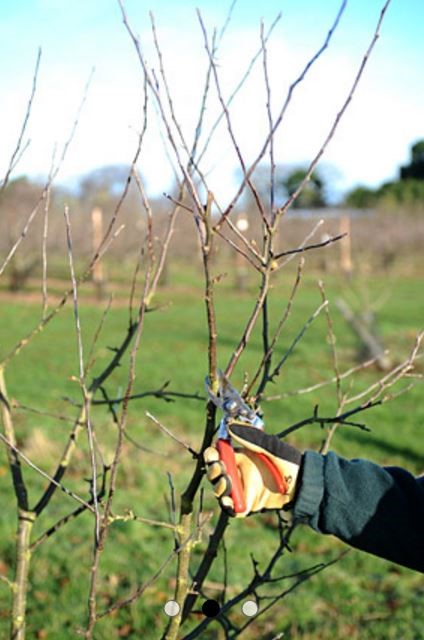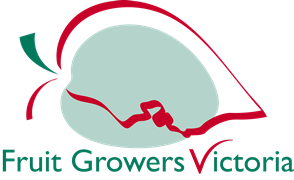PRINCIPLES:
Pruning Dwarfs Trees
Numerous experiments show that pruning is a dwarfing process, that is, it reduces the total size of the tree. Leaves are the food-manufacturing organs of the tree. Cutting away a live branch, which if left would have borne leaves, reduces the output of the "factory", and the final result is a reduced bearing area. Summer pruning has the greatest dwarfing effect.
Pruning Appears to Invigorate Trees
There is a certain deception in the effects of pruning, in that strong shoots with large leaves tend to rise just at the back of pruning cuts. This gives the impression of increased growth. Pruning reduces the number of growing points, thus stimulating an increase of growth at the remaining points. However, pruning, in proportion to its severity, reduces the total growth and the total leaf surface of the tree. (Invigorate trees when necessary with appropriate fertilizer use.)
Pruning Effect is Localized
The removal or cutting-back of the laterals of a branch reduces the growth of that branch. Pruning has the direct effect of producing growth response in the immediate area in which the cut is made.
Pruning Too Heavily Has Several Ill Effects
Excessive pruning, by over-stimulating growth, causes loss of fruit colour, delayed fruit maturity, and growth of suckers and water shoots. Excessive succulent growth increases the hazard of fire blight in apples and pears, canker in peaches, and winter injury in all species.
How to winter prune apples and pears
Traditionally spur- and tip- bearing trees were pruned in different ways. However, current pruning techniques are very similar for both as it does not involve the rigorous routine shortening of all young growth.
To start with:
- Always use sharp secateurs, loppers and a pruning saw; blunt tools leads to strains and tatty pruning cuts
- Start by removing crossing, rubbing, weak, dead, diseased, damaged and dying branches
Then:
- Shorten the previous year’s growth on each main branch (primary) by about one third to a bud facing in the required direction. This will encourage the development of new branches and spurs and maintain a good shape.
- Leave young laterals (side-shoots) unpruned so they can develop fruit buds in the second year
- Only remove the young laterals if they are crossing or if the growth is too crowded, i.e. growing closer than 10-15cm (4-6in) at the base
- Remove strong shoots (greater than 15cm [6in] long) growing towards the centre of the tree
- On older trees, remove or thin out any spur systems that have become congested. Where thinning or removal is required, remove spurs on the underside of the branches, where the developing fruit will not receive enough light, and produces inferior fruit
- If your apple tree is a tip- or partial tip-bearer, cut back a proportion of older fruiting branches to a strong younger shoot positioned closer to the main trunk or higher up the branch. This will reduce congestion and prevent branches becoming too long
If not regularly pruned for a while:
- Open the centre of the tree by removing larger branches at point of origin with a sharp pruning saw. If several large branches need to be removed, spread the work over two or three winters as very hard pruning encourages even more vigorous regrowth
- Reduce the height and spread of any branches that have grown too large by cutting them back to a vigorous outward and upward facing lower side branch (making sure this lower branch is at least one-third of the diameter of the branch being removed)

Overly vigorous and oversized trees
Trees that are too vigorous
If the tree is too vigorous, sending out an excessive amount of growth each year, consider also carrying out some pruning in summer. Summer pruning depletes the tree's resources and will help reduce vigour.
Note: this is done it addition to winter pruning and so is a little different from the summer pruning that is carried out on restricted fruit trees such as cordons and espaliers.
- Prune laterals (side shoots) longer than 30cm to 15cm all over the tree to encourage fruit bud formation
- Spread the pruning between mid-January to mid-February. Prune ripest wood first (branches that stopped growing and have formed a terminal bud)
- Do not tip prune all laterals, just the more vigorous ones
Trees that have become too large
Even with regular winter pruning, apple and pear trees are likely to become gradually larger making picking more difficult and potentially outgrowing the available space. Ultimately trees may require renovation.
To avoid the need to renovate, when the tree has reached an optimum size for the rootstock that it is grafted on, regulated pruning can be used instead of the process described here. Regulated pruning controls the size without affecting the fruiting potential of the tree.
Problems
When pruning your apple trees in the winter you may notice signs of apple canker on the stems. Lichens and other growths are also noticeable in winter; these are not damaging to the tree but can indicate low vigour.
Trees can suffer cold damage in winter and spring, which may affect fruit production.
Be aware of biennial bearing where a year of bumper cropping is followed by a year of poor cropping.
References:
- Apples and pears: winter pruning, Royal Horticultural Society, UK
- D. Richards, P. Patterson (2008): Apple trees benefit from proper pruning, Oregon State University Extension Service
- Ken Wilson (2000) – OMAFRA, Pruning Fruit Trees" (Order No. 90-121), Canada
Disclaimer: The information contained in this publication is based on knowledge and understanding at the time of writing. However, while all reasonable efforts have been made to ensure that this information is correct and current, the information covered is subject to change. Fruit Growers Victoria Limited does not assume responsibility and hereby disclaims any express or implied liability whatsoever to any party for any loss or damage caused by errors or omissions, whether these errors or omissions result from negligence, accident or any other cause.


